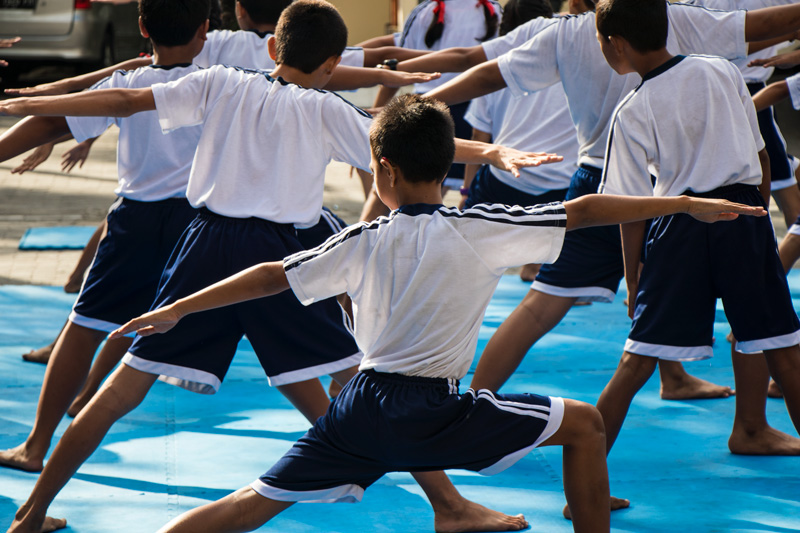Yoga has become very popular in the last years and is among the fastest growing alternative medicine methods. Many people start yoga because of its exercice effects, but soon realise that yoga changes more than the physical body. Having experienced it myself and being reported in many scientific studies, yoga and meditation reduce stress, anxiety, depression and improve mood in general.
Why Introduce Yoga to People at a Young Age?
Mental disorders are increasing rapidly, with 20% of young people being diagnosed with a psychological disorder. It is particularly important that children learn techniques to improve their mood and mental health as early as possible, as the age of onset of many mental health disorders is during childhood and adolescence. The earlier people start incorporating yoga into their daily life, the sooner it will become a habit!
Three Benefits of Yoga in School
1. Stress Reduction
There are many studies that confirm the benefits of yoga taught at schools. Most often, students report that tension and anxiety were reduced. After only a few weeks of yoga, students describe their significant improvements in mood! It has been shown that yoga lowers cortisol in school children, a steroid that is released in response to stress and responsible for increasing blood sugar, supressing the immune system, helping in the metabolism of fat, protein and carbohydrates and decreasing bone formation. Another study confirmed that a regular yoga practice reduced stress in graduate students and staff.
2. Higher Self-Esteem
Many students report an increase in self-esteem after a regular yoga practise. Yoga teaches students to take care of themselves and to turn their attention inwards, rather than towards external events and pressure from their peer group. This practise of self-love helps young people regulate their emotions during adolescence and even results in a lesser decline in school grades!
3. Higher Sociability
In high school students with behavioural problems, yoga helped to decrease these problems and improve sociability. This leads to better (re-) integration and prevention of escalating behaviour. What keeps young people from doing yoga? Reported barriers to yoga are time, cost, lack of pragmatic information about access to yoga and stereotypes related to flexibility, athleticism and typical yoga practitioners. Understanding the importance of yoga to young people, we need to help them overcome those barriers and make yoga accessible to everyone! This goal can be reached by teaching yoga to young people in schools worldwide in their sports lessons.
What Can You Do?
Are you a yoga teacher and would like to teach yoga to young people? Bring the benefits of yoga into schools by volunteering for us. Or are you a school interested to receive free yoga classes for you students? Sign up here.
I’m a neuroscientist and yoga teacher in training. My yoga practise has a strong focus on anatomically correct alignment. Using my knowledge from my neuroscience studies, I understand the link between each asana and the nervous system. This allows me to use my practise to positively influence the nervous system and create a strong body and a strong mind! For me, yoga is being in the moment. Yoga has helped my to understand that I control my body and my mind, not the other way around. I now understand that we should not chase happiness, as there will always be pain or negative moments. But it is up to us what we make out of these negative moments. We don’t have to suffer; we can choose to make the best out of it! The concept of being here and now, forgetting the past and not worrying about the future is essential in young kids and my goal is to help them cultivate this principle!


Neue Kommentare